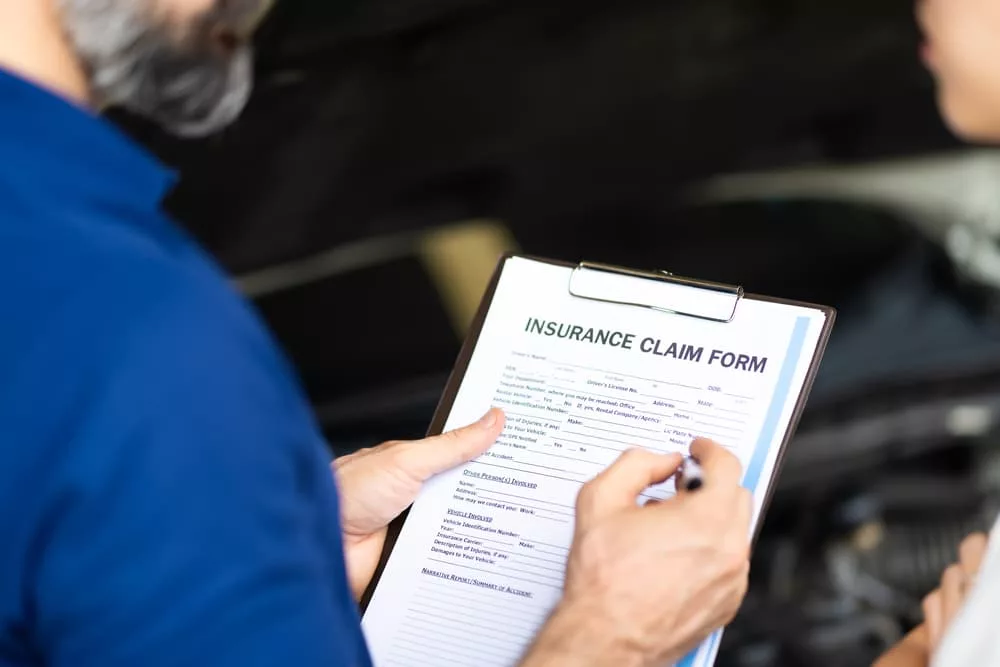How Much Should You Ask for in a Car Accident Settlement?
The settlement you demand from the insurance company will depend on the specific facts of the accident that injured you. It’s impossible to predict the amount of money you will receive. However, you can consult an experienced car accident lawyer for assistance. Your lawyer can review your claim to determine its monetary value and negotiate a full and fair settlement with the insurance company on your behalf. Reach out to a Miami car accident lawyer.
What Compensation Is Available After a Car Accident?
You can expect to spend significant money on medical bills, vehicle repairs, and other expenses after a car crash. If you get hurt, you need treatment to recover from your injury. You might also need time off from work, resulting in lost wages. A severe injury can prevent you from performing household chores, meaning you’ll need to hire someone to care for your children, do the laundry, and handle other tasks.
The settlement you receive should cover your financial losses. However, you also deserve compensation for your non-economic losses, like pain and suffering.
When you pursue a claim or lawsuit against the negligent driver, the money you recover might pay for your:
- Emergency room visits, prescriptions, rehabilitative services, and other medical expenses
- Pain and suffering
- Out-of-pocket expenses
- Inconvenience caused by the accident
- Lost earnings
- Lost future earnings
- Emotional distress
- Cost of household assistance
- Loss of enjoyment of life
- Property damage
Determining an appropriate settlement requires monetizing your total losses. You need substantial evidence of your expenses and non-economic losses to support your proposed settlement. If you don’t have proof that your injury prevented you from working or caused chronic pain or other symptoms, the insurance company likely won’t agree with your demands. They can offer a significantly lower settlement than you deserve.
How to Determine the Monetary Value of a Car Accident Case
Financial losses like medical bills and lost wages are simple to calculate. You can refer to invoices, receipts, and bills to add each cost. Calculating non-economic losses such as pain and suffering is more complicated. You must use a specific formula to determine the value of those losses because there can be no financial documentation of their cost.
Insurance carriers often use one of two methods to calculate the claimant’s non-economic losses.
Multiplier Method
The insurance company calculates the claimant’s lost wages, property damage, medical bills, and other expenses with the multiplier method. Then they pick a multiplier.
The multiplier indicates numerous aspects of the claim, such as:
- Type and severity of the injury
- Total accident-related costs
- Emotional effects of the crash
- The estimated cost of necessary treatment in the future
- Whether the injury results in permanent disability or impairment
The insurer will decide which multiplier to use in the formula based on these and other circumstances. Typically, a higher number might indicate a disabling condition that requires ongoing treatment to manage symptoms.
Once the insurer picks a multiplier, they will multiply the total financial losses by the multiplier. The final number represents the value of the claim and what they might present during negotiations.
However, it’s critical to remember the insurance company is not on your side. You might estimate the compensation you believe you deserve and discover it differs significantly from what the insurer calculates. That’s why seeking legal representation is essential, so you have someone protecting your rights and fighting the insurance carrier on your behalf.
Per Diem Method
The per diem method calculates a specific dollar amount for each day the accident causes you to live with the injury and subsequent pain. Although this method can get you the compensation you need to cover your losses, justifying the daily rate you demand from the insurer is challenging.
One way to support your per diem rate is to use your lost wages. If you can’t work due to your injury, you can calculate the wages you’re losing while you’re not allowed to work to illustrate how much your pain affects your life.
For example, let’s say you sustain whiplash in a rear-end collision. After your initial emergency room visit, the doctor recommends a neck brace to immobilize the injured part of your body and medication to relieve your pain. You require medication and additional treatment for five months due to chronic pain, decreased range of motion, and other issues with your neck.
Your current employer pays you $45,000 a year. That’s equivalent to approximately $180 per day. To determine a value for your pain and suffering, take the 180 and multiply it by 150, the number of days you suffered after the crash. That gives you a pain and suffering value of $27,000.
Calculating a daily rate for future losses requires a more involved process. Since you can’t predict how much your injury will affect you after the claim settles, getting creative with your formula is necessary. You can depend on your medical records to determine how much additional treatment you need for a permanent or long-term injury and estimate the cost of that treatment. However, arriving at a daily rate is tricky, so you might be better off using the multiplier method under those circumstances.
How a Lawyer Might Determine How Much to Demand From the Insurance Company
When you meet with your lawyer to discuss the accident, they will ask for specific information to determine if they can represent you. If you decide to hire them, they can conduct a thorough investigation into the crash to establish liability and obtain supporting evidence.
The evidence they collect will depend on:
- Chemical test results from the other driver
- Copies of your hospital records, physical therapy notes, imaging tests, and other treatment records
- Estimates for repairing the damage to your car
- Lost wage report from your employer showing lost days and pay from work
- Copies of your billing statements, receipts, and other financial documentation to prove your financial losses
- Testimony from experts, such as medical providers, accident reconstruction specialists, and vocational experts
- Police report
- Statements from eyewitnesses
- Photos from the accident scene
- Traffic camera footage of the collision
- The other driver’s cell phone records to establish whether distracted driving contributed to the accident
- Statements from your family and friends about how your injury affects your life and daily routine
Your lawyer can file your claim and submit the evidence they find to the insurance company. They will also determine the settlement amount they believe you should receive based on your injury, losses, and other factors.
You don’t have to handle any part of the claim yourself when you hire a lawyer. They will take over so you can focus on recovering. Once settlement negotiations start, they will update you on any offers and advise you of the available options. Sometimes, filing a lawsuit is necessary if the insurer refuses to settle for the amount you want.
How a Car Accident Claim Works
You must follow multiple steps to file a claim with the insurance company and negotiate a settlement. Some claims settle quickly, especially if liability is clear. Others take longer to resolve, especially if the insurer believes you are at fault or the accident involves multiple parties.
The steps you can expect during your claim might include:
- Obtain a copy of the insurance policy to determine the available coverage
- File the claim with the appropriate insurance company
- Gather the available evidence to prove what happened and the compensation you deserve
- Send a demand letter with the evidence and a letter outlining the facts of the case
- Negotiate a settlement with the insurance carrier
If the insurance company denies your claim or offers an inadequate settlement, your next step might be to file a lawsuit.
How To Maximize the Value of Your Car Insurance Claim
There are things you can do to improve your chance of an adequate settlement and things you can do that would affect your claim negatively.
To maximize the value of your claim and avoid mistakes accident victims commonly make:
- Don’t accept the first offer. The insurance carrier might offer a settlement quickly. They might realize liability is clear, and there isn’t anything they can do to deny your claim. However, they will likely provide a lowball offer to save money. You should not accept any offer unless you consult a car accident lawyer first. The first offer isn’t usually the best, and your lawyer can advise you on what to do.
- Document the accident scene. Evidence is valuable in a car accident case. You must show someone else is at fault for the crash to hold the negligent driver liable. However, that doesn’t mean only collecting copies of your medical records. If possible, you or a friend should gather evidence at the crash scene. Even after the fact, take photos of the vehicle damage, road debris, your visible injuries, and other physical proof of what happened.
- Don’t sign anything. The insurer might send you documents to complete or authorization forms to sign. Never sign anything without a lawyer’s approval. Insurance companies try to trick claimants into signing away their rights to a full and fair settlement or authorizing access to their medical records. No law requires you to sign anything the insurance company asks you to sign.
- Seek immediate treatment. You should go to the hospital immediately after the accident, even if your injury appears minor. Some injuries don’t cause noticeable symptoms until days or weeks later. Diagnosing your injury and starting treatment can improve your chance of healing and help your claim.
- Avoid talking to the insurance adjuster. Politely decline if the insurance adjuster calls you to discuss the accident, your injuries, and other information about your claim. They might intimidate you into accepting their low settlement offer or ask pointed questions to get you to say something they can use against you. You don’t have to talk to them about anything, especially if you already have an attorney.
- Report the crash. You should never drive away from an accident scene until you report it to law enforcement. You can face serious legal consequences if the police track you down and charge you with a hit and run. Call 911 and wait for an officer to arrive and investigate. Once they inform you you’re free to leave, seek medical care.
- Stay away from social media. You should not post to any of your social media accounts during your ongoing case. The insurance carrier can use your posts against you to disprove the severity of your injury or establish a pattern of frequent online activity. That can diminish the value of your claim.
Steps Involved in a Lawsuit

Pursuing a lawsuit requires more steps than an insurance claim. It also comes with strict laws and deadlines you must follow, or you can lose your right to compensation. In Florida, the statute of limitations allows a four-year timeframe to file a lawsuit. That means you have four years from the accident date to initiate your lawsuit. If you’re within the timeframe when the insurer denies your claim or refuses to settle, you can proceed with the suit.
Lawsuits occur in multiple stages, including:
- File a complaint outlining the details of the lawsuit, including the allegations against the defendant
- Draft and serve the summons informing the defendant of the allegations against them
- Wait for the defendant to file an answer to the complaint
- Go through the discovery process, which involves both parties requesting evidence from each other
- Participate in mediation to try to negotiate a settlement, so you don’t have to go to trial
- Prepare for trial if mediation isn’t successful
- Argue your case before a judge and jury
You can settle outside of court at any time during the lawsuit. A settlement is only off the table once the jury or judge decides on the matter. Mediation is typically the stage in a lawsuit when opposing parties compromise, agree to resolve the case, and avoid a trial. After successful mediation, both sides sign a settlement agreement, and the lawsuit ends. Reach out to a Miami personal injury lawyer.
Related articles
Related articles Related articles Related articles Related articles Related articles Related articles Related articles Related articles Related articles Related articles
Car Accident
18 Jan 2024
Who Is Liable if a Road Hazard Causes a Car Accident?

Car Accident
16 Jan 2024
How to File a Car Accident Claim as a Passenger




